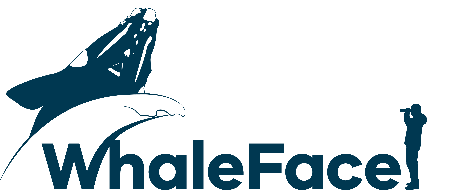Whale News - August 2022
A familiar face and some new ones
We are excited to see SE0202 (Aka Big Lips) back at Logans Beach for her 8th calving season. Big Lips was first sighted with a calf in 1995, since then she has returned to have 8 calves. The last time we saw Big Lips was in 2017 so she appears to have had a 5-year break between calving. Southern right whales typically have a 3–4-year calving cycle, but we are seeing more examples of longer intervals between calving.
Why Big Lips?
The callosities that run along the lower jaw of southern right whales are referred to as ‘lips’. Some whales have long lips, some have short lips, some are missing lips. As you can see from the photograph below, Big Lips has nice thick lip callosities that really stand out. This does not mean to say that other whales don’t have big lips as well. To successfully identify a southern right whale, you must look at the size, number and positioning of all callosities. Cataloguing southern right whales is a skill that requires time and experience and needs more than one person to validate the match. It is important for our research that we get this right, so we dedicate time after the season to go through all images to code, match and validate them before they are added to our research database.
.png)
b)
.png)
Big lips a) Taken under research permit, 9/8/22; b) taken by Maureen MacDonald, 10/7/22
New females
This year we have already welcomed at least two new females to south-western Victoria. They have been using coastal areas from Port Campbell to Port Fairy (including the Logans Beach nursery area). One female is known to the Encounter Bay catalogue (in South Australia) as Emm. This is her first appearance in the south-east (as far as we know). Thanks to the connections with the Encounter Bay research team (and the citizen science community there) we know that Emm was with a calf in South Australia in 2018. It will be interesting to follow Emm’s journey in the coming years to see if she decides to settle into calving in Victoria or if she moves back the SA region. The large callosity on the tip of the whale’s head is called a ‘bonnet’. Emm gets her name from the ‘M’ shape of the edge of her bonnet which we say is ‘eroded’.
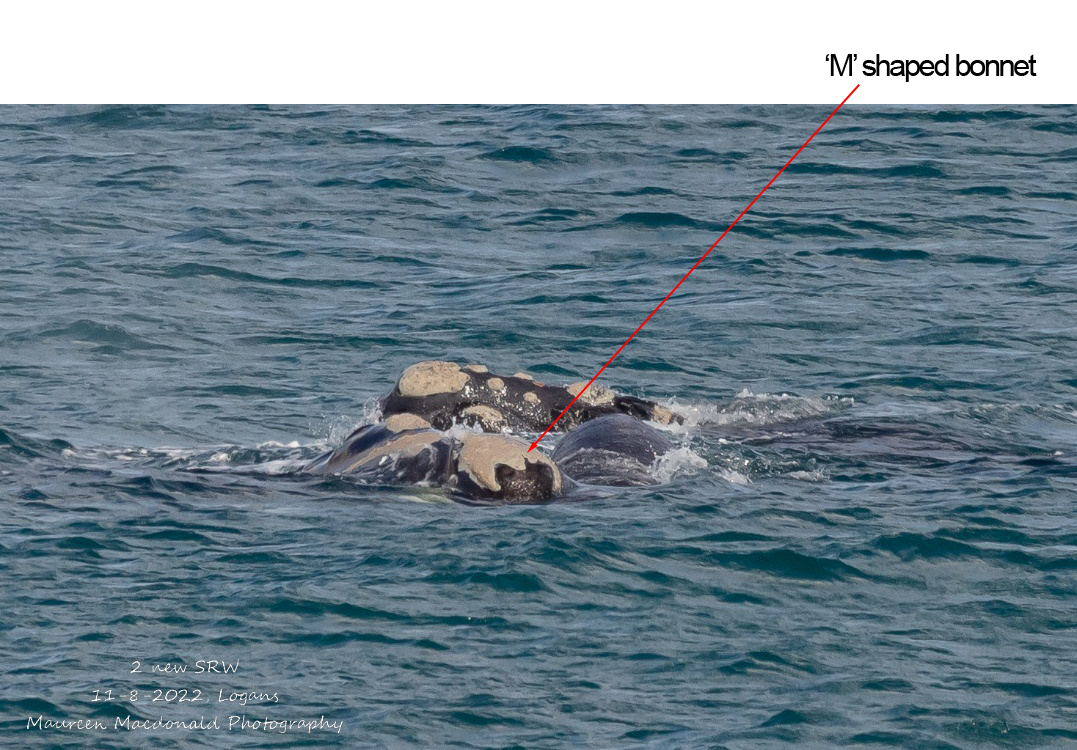
Emm and others – Maureen MacDonald, 11/8/22
The second new female is still a mystery. It is likely that she first appeared around the 9th or 10th of July with her calf and has been in the south-west Victoria area since. She will be added to the research catalogue at the end of the season, where she will get an ID (and catalogue name). At least three other cow-calf pairs have been sighted in south-west Victoria, but they have been quite elusive, and we are still waiting to see if we get any more sightings of them this year.
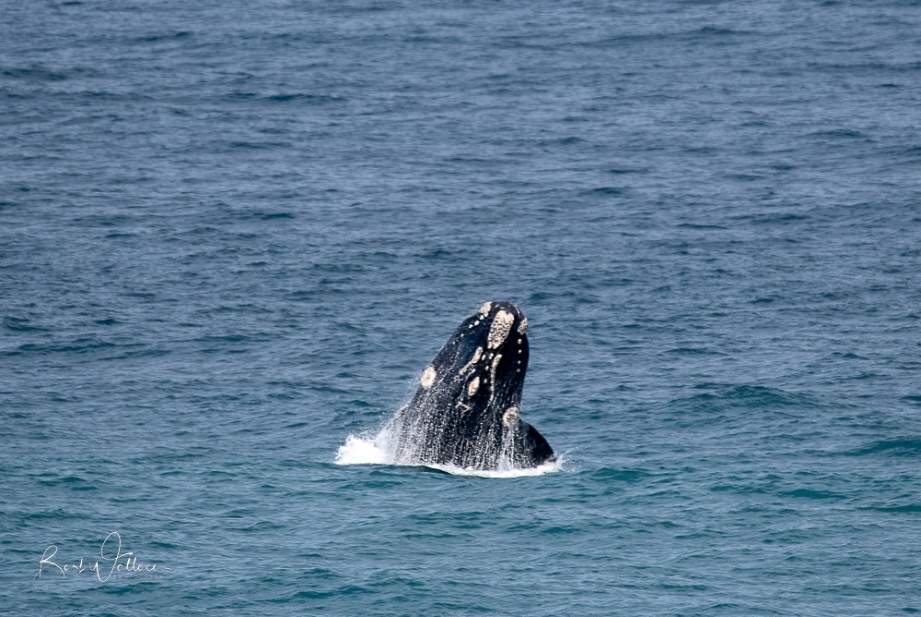
New female breaching – Barb Wallace, 10/8/22
Where’s Bonnet?
We know that SE0203 (Aka Bonnet) was in Warrnambool 2/7/2022. She was without a calf and there has not been a confirmed sighting of her since. Hopefully Bonnet is on the coast somewhere, and we get another confirmed sighting of her this season. Bonnet has previously calved in Victoria in 2002, 2009 and 2016.
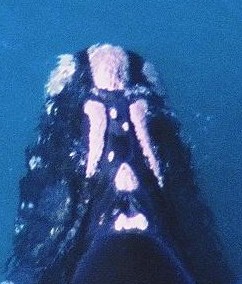
SE0203 (“Bonnet’) – Mandy Watson, 27/8/2002
Calves stealing the show
The calves have been very active this season delighting whale watchers with their acrobatics, sometimes breaching more than 40 times in a short space of time. There are a few theories as to why whales breach including communication, dislodging parasites and play. It is great to see that the Logans Beach nursery area is offering a safe place for these young whales to practice important life skills. As you can see below, two of the calves this year have distinctive white patches on their underside which will help with identifying them in the future
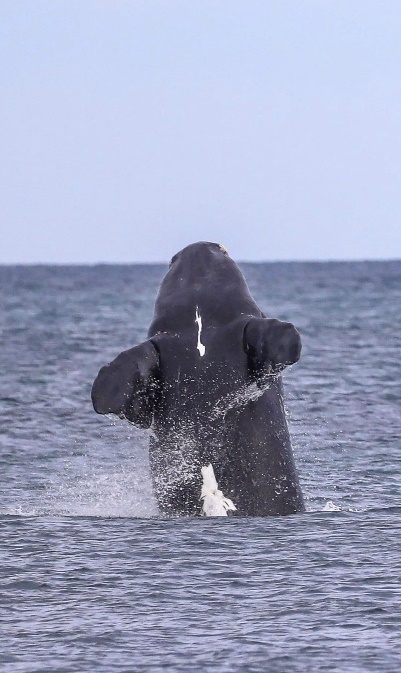
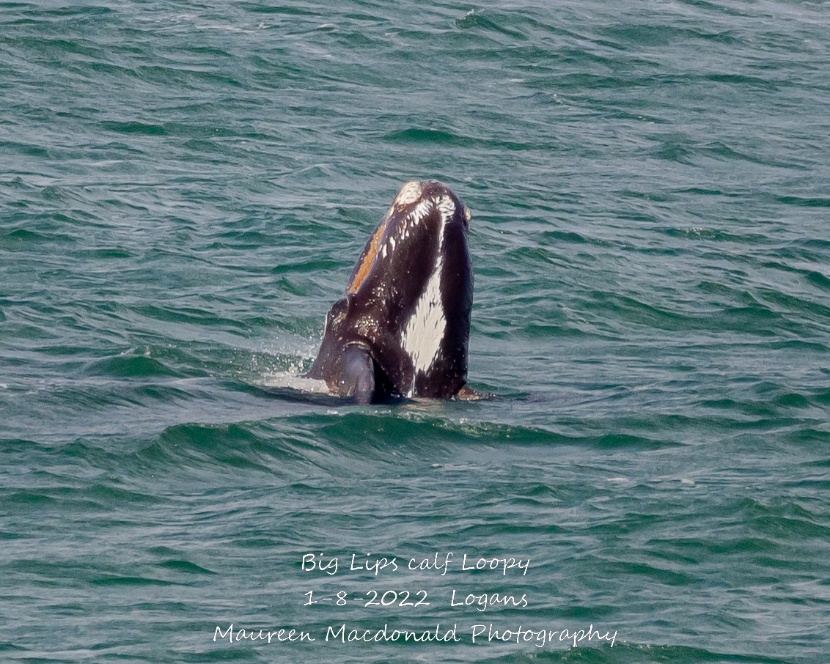
Emm’s calf - Shane Smith, 12/8/22 Big Lip’s calf - Maureen MacDonald, 13/8/22
Drone Research
High-resolution drone imagery is used to examine the callosity patterns of calves. Calves can be hard to code and the high-resolution imagery helps us to see callosities that may not be fully developed or obscured by orange cyamids. It also gives us a better understanding of how callosities develop over time and when the optimal time is for photographing the calves for ID purposes. Adding calves to the photo-identification catalogue is important so that we can document their return to the Australian coast in the future and understand more about survivorship and whether calves are returning to the area to breed themselves. Unfortunately, we may have to wait several years to see if this season’s calves return.
Drone imagery is also used to collect data on the health and body condition of the adults. These types of health assessments are being done on right whale populations around the world and are critical to understanding what factors may be affecting population recovery in south-east Australia.
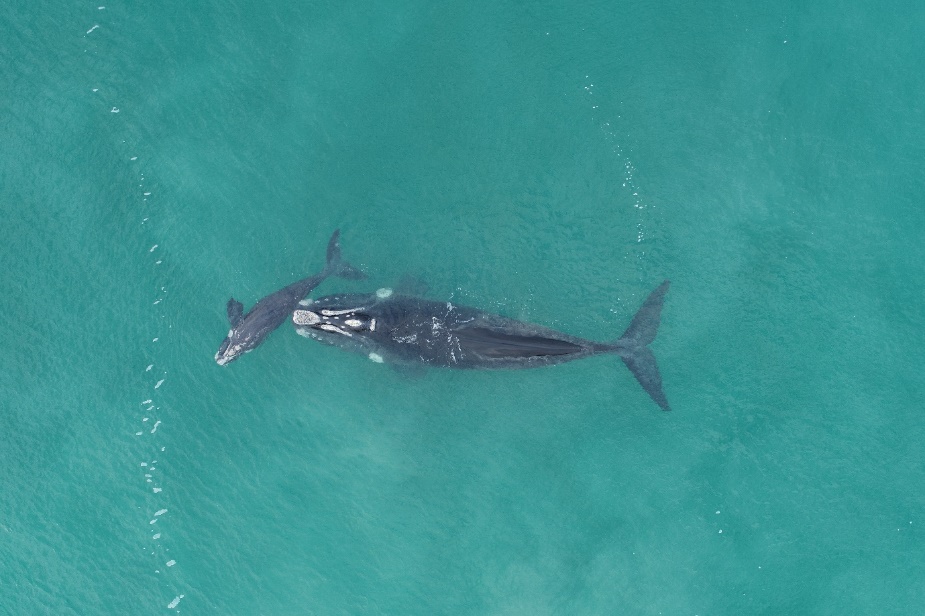
Cow-calf pair at Logans Beach on 9/8/22. Images taken under research permit (no. 10010359) under Section 78 (1) (c) of the Wildlife Act 1975 and Animal Ethics approval (AEC 22-001)
Drones and other aircraft are not normally allowed within 500 metres of whales. This carefully planned project has animal ethics approval and a Wildlife Act research permit. The animal ethics committee includes vets, scientists and community members who assess the risk against the benefit of the information gained by the research. The permit requires the drone to be operated under strict conditions including minimum distances and time limits.
We were able to collect imagery of all 3 cow-calf pairs at Logans Beach early on Tuesday morning (9/8) in a short space of time. On the day of our drone flights, a fixed-winged plane with an experienced whale observer was used to locate whales along the south-west coastline. The purpose of this was to direct the drone crew to any whales outside of the nursery area. No whales were spotted outside of Logans Beach. We hope to repeat the flights again in around 2-3 weeks’ time (weather permitting).
We will share with you some more images from our drone study in future Whale News additions.
Need help with WhaleFace?
The Whaleface site has recently migrated to a new server. During this time, you may have experienced some technical difficulties. Our tech team aim to minimise disruption, but unfortunately sometimes maintenance is necessary and glitches in the system do arise. If you experience any problems accessing WhaleFace or uploading your sightings, please do not hesitate to contact me directly at Kasey.stamation@delwp.vic.gov.au or log a request with SWIFFT website help desk cerdi.support@federation.edu.au Thank you for your patience and for continuing to contribute to our knowledge of southern right whales in Victoria.
Happy whale watching!
Kasey
